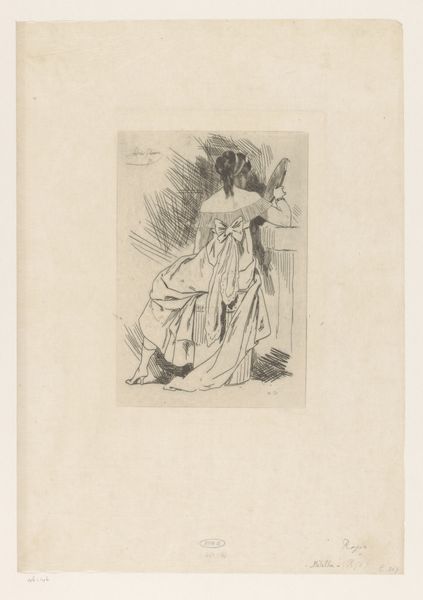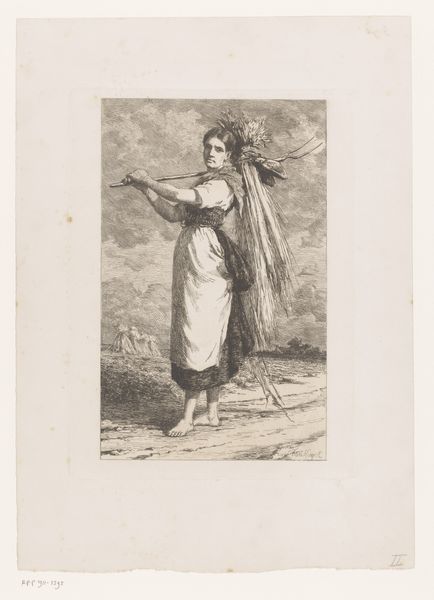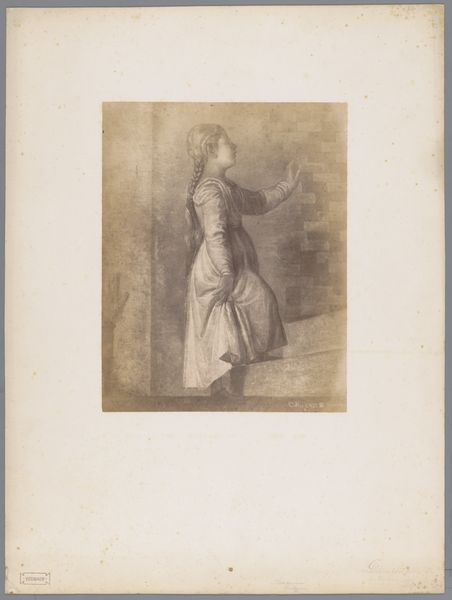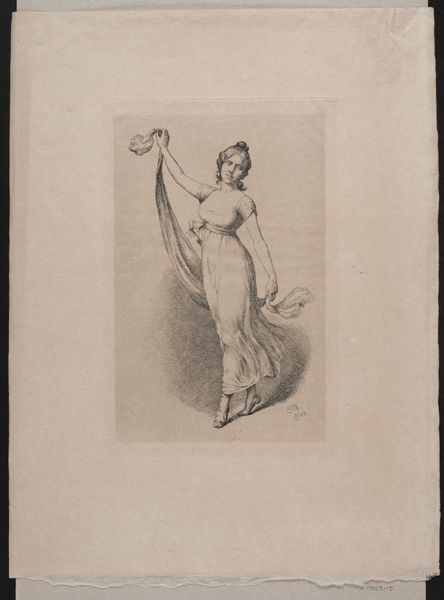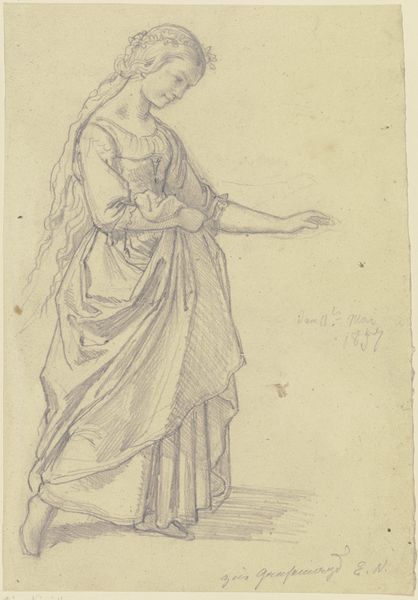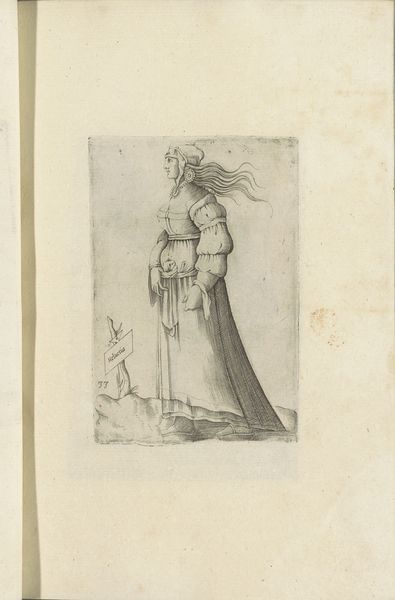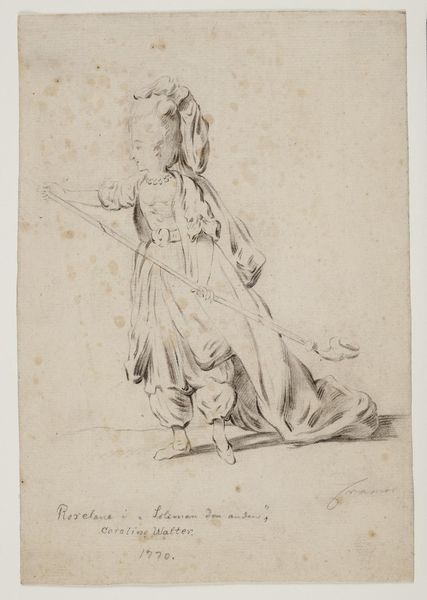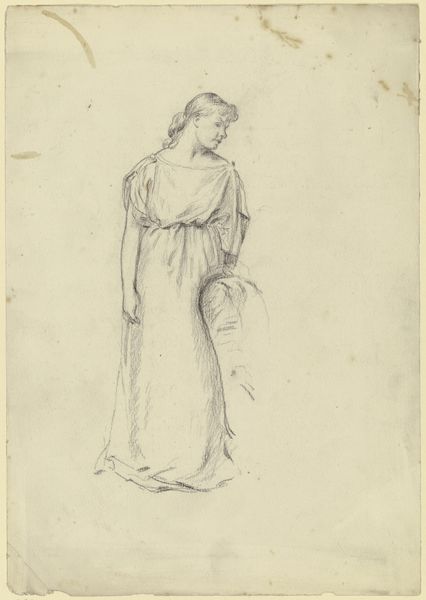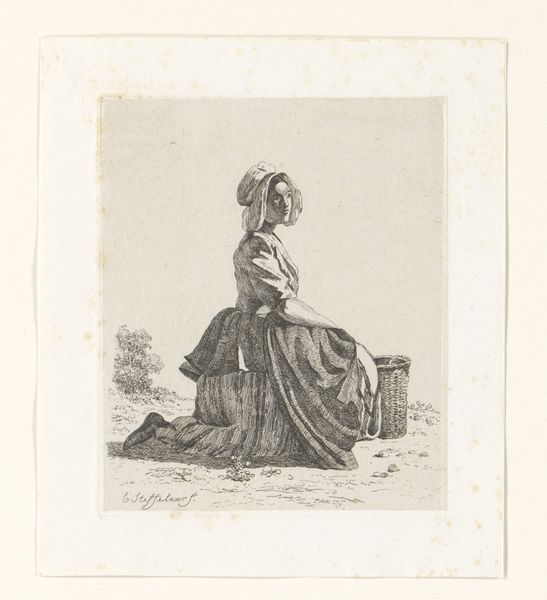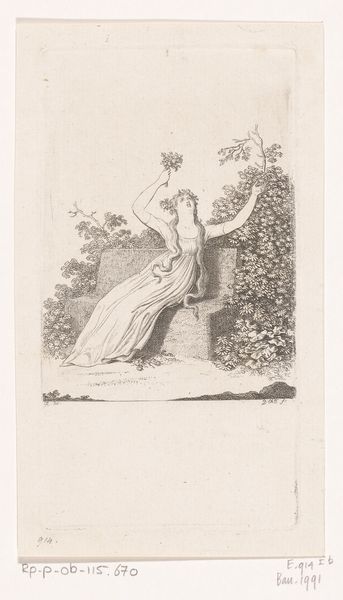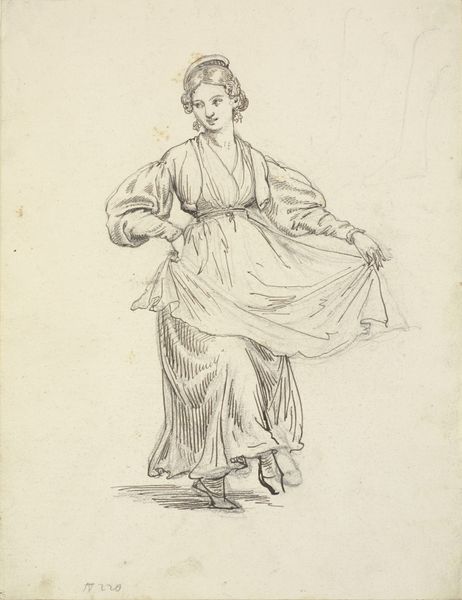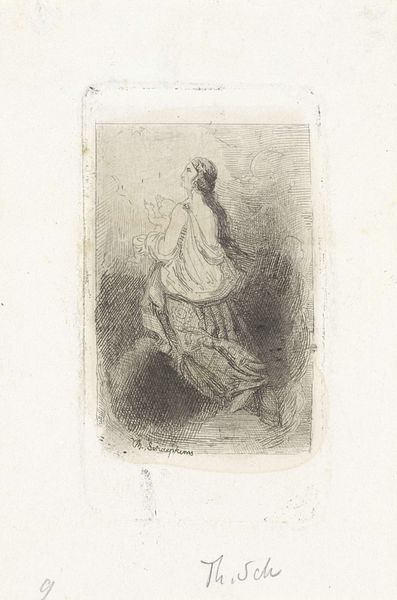
Jonge vrouw loopt op blote voeten met een hooivork over haar schouder door het land 1862 - 1911
0:00
0:00
drawing, pencil
#
drawing
#
toned paper
#
light pencil work
#
pencil sketch
#
landscape
#
figuration
#
personal sketchbook
#
idea generation sketch
#
ink drawing experimentation
#
pen-ink sketch
#
pencil
#
sketchbook drawing
#
pencil work
#
genre-painting
#
sketchbook art
#
realism
Dimensions: height 268 mm, width 199 mm
Copyright: Rijks Museum: Open Domain
Editor: We're looking at "Jonge vrouw loopt op blote voeten met een hooivork over haar schouder door het land," or "Young woman walking barefoot with a pitchfork over her shoulder through the country," by Frans Van Kuyck, created sometime between 1862 and 1911. It's a pencil drawing, and there’s something very serene about it, despite the suggestion of hard labor. What stands out to you? Curator: What immediately grabs me is the portrayal of labor. We see a young woman, likely from a rural, working-class background, represented in what seems like a fairly unidealized manner, even romanticized by some accounts. Van Kuyck does give a certain importance to the figure. How does this presentation speak to the broader social and political context of art at the turn of the century? Do you think it's glorifying or documenting? Editor: I'd say it attempts a little of both. I see a romanticized element in the attention to her figure. The sketch-like quality almost softens the reality of agricultural work. But how did the artistic portrayal of labor change during this period, especially regarding class? Curator: That's a key question. We need to consider the rise of Realism and Naturalism. Artists were increasingly interested in depicting everyday life, and often this included the working classes. These depictions weren't always celebratory. Some were critiques of social conditions, highlighting the harsh realities of poverty and labor exploitation. Do you notice a sense of social commentary in Van Kuyck’s piece, or does it lean more towards idealization? Editor: I’m now thinking more idealization, as you put it, even in the barefoot detail – an almost picturesque, back-to-nature presentation, softening any implicit social commentary. Curator: Exactly, and this reveals the role of art institutions and patronage. Whose gaze is shaping this image? How does the artist's perspective—likely someone from a different social stratum than the woman depicted—influence our reading? Editor: That's such an interesting layer. It makes me reconsider the entire drawing. Thanks! Curator: It’s crucial to always think about the social and political lens through which art is created and consumed. Something that Van Kuyck’s drawing helped crystalize in our minds.
Comments
No comments
Be the first to comment and join the conversation on the ultimate creative platform.
